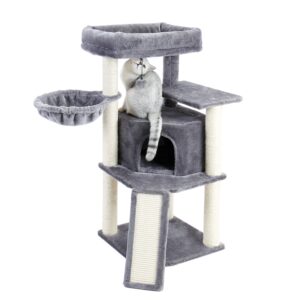Delivery Method: Via Email Reference #: 320-25-58 Product: Drugs Recipient:
Recipient Name
Mr. Hongzhi Li
Yiling Pharmaceutical Ltd.
No. 36 Zhujiang Street
Shijiazhuang Shi
Hebei Sheng, 050035
China
Issuing Office: Center for Drug Evaluation and Research (CDER)
United States
Warning Letter 320-25-58
March 27, 2025
Dear Mr. Li:
The U.S. Food and Drug Administration (FDA) inspected your drug manufacturing facility, Yiling Pharmaceutical Ltd., FEI 3011640199, located at No. 36 Zhujiang Street, Shijiazhuang, Hebei, China, from October 7 to 11, 2024.
This warning letter summarizes significant violations of Current Good Manufacturing Practice (CGMP) regulations for finished pharmaceuticals. See Title 21 Code of Federal Regulations (CFR), parts 210 and 211 (21 CFR parts 210 and 211).
Because your methods, facilities, or controls for manufacturing, processing, packing, or holding do not conform to CGMP, your drug products are adulterated within the meaning of section 501(a)(2)(B) of the Federal Food, Drug, and Cosmetic Act (FD&C Act), 21 U.S.C. 351(a)(2)(B).
We reviewed your October 31, 2024 response to our Form FDA 483 in detail and acknowledge receipt of your subsequent correspondence.
During our inspection, our investigator observed specific violations including, but not limited to, the following.
1. Your firm failed to use equipment in the manufacture, processing, packing, or holding of drug products that is of appropriate design, adequate size, and suitably located to facilitate operations for its intended use and for its cleaning and maintenance (21 CFR 211.63).
Your non-dedicated manufacturing equipment was not designed and maintained appropriately to prevent potential cross-contamination of drug products.
For example, (b)(4) were not designed and maintained to ensure that the (b)(4) consistently closes tightly, to prevent backflow of bulk drug powder into the (b)(4) duct. Residues were observed in the (b)(4) duct of (b)(4).
Numerous drug substance residues, including (b)(4), were recovered upon swabbing of (b)(4). Your (b)(4), are used to manufacture multiple drug products, including (b)(4) therapeutics such as (b)(4).
In addition, junctions on the (b)(4) duct had degraded seals and were covered with tape.
In your response, you state you will replace the (b)(4) on (b)(4) to prohibit backflow into the (b)(4) ducting and replace the (b)(4) ducting on (b)(4) for ease of cleaning and sanitization. You further state you are identifying all batches of U.S. product within expiry from these (b)(4) and have initiated testing reserve samples for possible cross-contamination.
Your response is inadequate. Your assessment is limited to testing reserve samples of each finished drug product only for the presence of the preceding drug substance processed on the same non-dedicated equipment, instead of testing each reserve sample for all drug substances processed on the equipment. You do not adequately address how you intend to maintain this equipment to ensure the integrity of the seals.
Equipment used in pharmaceutical manufacturing operations should be designed to protect drug products from contamination. Air flow over dirty surfaces can cause contamination of the drug being processed in a (b)(4). Robust design, cleaning, and maintenance of this and other equipment are critical to prevent cross-contamination.
Contamination is generally not uniformly distributed. Data obtained from retrospectively testing a small proportion of a batch (e.g., reserve samples for the presence of previous active ingredient) is limited in its ability to retrospectively assess the extent of contamination in other portions of a batch. The lowest or highest results obtained from testing a small sample size is unlikely to reveal the true range of minimum and maximum contamination level that exists in a batch exposed to the contamination hazards identified at your firm. Consequently, the range of variability of contamination levels in batches produced by your firm remain characterized by substantial residual uncertainty.
Because of the limitations of retrospective testing in gaining a representative understanding of the entire lot, testing reserve samples alone is insufficient to determine the scope of the contamination issues and mitigate the associated risks. Further evaluation and scientific rationale are needed in your firm’s risk assessment to reflect the nature of cross-contamination events and determine the degree of cross-contamination risk that may be posed to portion of marketed batches.
In response to this letter, provide the following:
Your corrective action and preventive action (CAPA) plan to implement routine, vigilant operations management oversight of facilities and equipment. This plan should ensure, among other things, prompt detection of equipment/facilities performance issues, effective execution of repairs, adherence to appropriate preventive maintenance schedules, timely technological upgrades to the equipment/facility infrastructure, and improved systems for ongoing management review.
- A comprehensive retrospective risk assessment that addresses all possible cross-contamination, including but not limited to, highly potent substances such as (b)(4).
- A comprehensive risk assessment from analysis of adverse drug events for all affected drug products. Any side effects possibly attributable to cross-contamination with (b)(4) should be reported.
- A detailed CAPA plan to implement segregation of highly potent substances such as (b)(4) from equipment shared with other drug products.
2. Your firm’s quality control unit failed to exercise its responsibility to ensure drug products manufactured are in compliance with CGMP, and meet established specifications for identity, strength, quality, and purity (21 CFR 211.22).
Your quality unit (QU) failed to adequately implement the facility’s quality function and ensure quality oversight. For example:
You failed to have an adequate procedure to clean (b)(4). Your approved procedure did not include sufficient directions to clean the (b)(4) ducts, including directions on disassembly and visual inspection for cleanliness. Thus, you failed to identify visible residue with the possibility of cross-contaminated drug products being released to the market.
In your response you identify (b)(4), was not designed to facilitate appropriate cleaning. You acknowledge this resulted in residual drug substances inside the (b)(4) duct of your (b)(4). You indicate that you are updating your cleaning procedures to require disassembly and post cleaning inspection.
Your response is inadequate. You do not provide a written approved procedure that would ensure adequate disassembly and cleaning of the (b)(4) duct. And you fail to provide evidence you have implemented CAPA measures ensuring QU oversight of cross-contamination risks from highly potent substances, such as (b)(4), on shared equipment.
You also manufacture (b)(4), a highly potent drug on the same shared equipment. (b)(4) is a hazardous drug that can cause (b)(4) if administered outside of its therapeutic range.
In response to this letter, provide:
- A comprehensive, independent assessment and remediation plan to ensure your QU is given the authority and resources to effectively function. The assessment should also include, but not be limited to:
o A determination of whether procedures used by your firm are robust and appropriate.
o Provisions for QU oversight throughout your operations to evaluate adherence to appropriate practices.
o A complete and final review of each batch and its related information before the QU disposition decision.
o Oversight and approval of investigations and discharging of all other QU duties to ensure identity, strength, quality, and purity of all products. - A comprehensive, independent retrospective assessment of your cleaning effectiveness to evaluate the scope of cross-contamination hazards. Include the identity of residues, other manufacturing equipment that may have been improperly cleaned, and an assessment whether cross-contaminated products may have been released for distribution. The assessment should identify any inadequacies of cleaning procedures and practices, and encompass each piece of manufacturing equipment used to manufacture more than one product.
- A CAPA plan, based on the retrospective assessment of your cleaning program, that includes appropriate remediations to your cleaning processes and practices, and timelines for completion. Provide a detailed summary of vulnerabilities in your process for lifecycle management of equipment cleaning. Describe improvements to your cleaning program, including enhancements to cleaning effectiveness; improved ongoing verification of proper cleaning execution for all products and equipment; and all other needed remediations.
- A comprehensive assessment of your overall system for investigating deviations, discrepancies, complaints, out-of-specification results, and failures. Provide a detailed action plan to remediate this system. Your action plan should include, but not be limited to, significant improvements in investigation competencies, scope determination, root cause evaluation, CAPA effectiveness, QU oversight, and written procedures. Address how your firm will ensure all phases of investigations are appropriately conducted.
- A complete assessment of all investigations where unknown impurities or unknown peaks were detected in marketed product and a determination if these are associated with potential cross-contamination events.
Your firm’s quality systems are inadequate. See FDA’s guidance document Quality Systems Approach to Pharmaceutical CGMP Regulations for help implementing quality systems and risk management approaches to meet the requirements of CGMP regulations 21 CFR, parts 210 and 211 at https://www.fda.gov/media/71023/download.
Conclusion
The violations cited in this letter are not intended to be an all-inclusive list of violations that exist at your facility. You are responsible for investigating and determining the causes of any violations and for preventing their recurrence or the occurrence of other violations.
If you are considering an action that is likely to lead to a disruption in the supply of drugs produced at your facility, FDA requests that you contact CDER’s Drug Shortages Staff immediately, at drugshortages@fda.hhs.gov, so that FDA can work with you on the most effective way to bring your operations into compliance with the law. Contacting the Drug Shortages Staff also allows you to meet any obligations you may have to report discontinuances or interruptions in your drug manufacture under 21 U.S.C. 356C(b). This also allows FDA to consider, as soon as possible, what actions, if any, may be needed to avoid shortages and protect the health of patients who depend on your products.
Correct any violations promptly. FDA may withhold approval of new applications or supplements listing your firm as a drug manufacturer until any violations are completely addressed and we confirm your compliance with CGMP. We may re-inspect to verify that you have completed corrective actions to any violations.
Failure to address any violations may also result in the FDA refusing admission of articles manufactured at Yiling Pharmaceutical Ltd., located at No. 36 Zhujiang Street, Shijiazhuang, Hebei, China, into the United States under section 801(a)(3) of the FD&C Act, 21 U.S.C. 381(a)(3). Articles under this authority that appear to be adulterated may be detained or refused admission, in that the methods and controls used in their manufacture do not appear to conform to CGMP within the meaning of section 501(a)(2)(B) of the FD&C Act, 21 U.S.C. 351(a)(2)(B).
This letter notifies you of our findings and provides you an opportunity to address the above deficiencies. After you receive this letter, respond to this office in writing within 15 working days1. Specify what you have done to address any violations and to prevent their recurrence. In response to this letter, you may provide additional information for our consideration as we continue to assess your activities and practices. If you cannot complete corrective actions within 15 working days, state your reasons for delay and your schedule for completion.
Send your electronic reply to CDER-OC-OMQ-Communications@fda.hhs.gov. Identify your response with FEI 3011640199 and ATTN: Brian Nicholson.
Sincerely,
/S/
Francis Godwin
Director
Office of Manufacturing Quality
Office of Compliance
Center for Drug Evaluation and Research
____________________
1 Under program enhancements for the Generic Drug User Fee Amendments (GDUFA) reauthorization for fiscal years (FYs) 2023-2027, also known as the GDUFA III Commitment Letter, your facility may be eligible for a Post-Warning Letter Meeting to obtain preliminary feedback from FDA on the adequacy and completeness of your corrective action plans.






